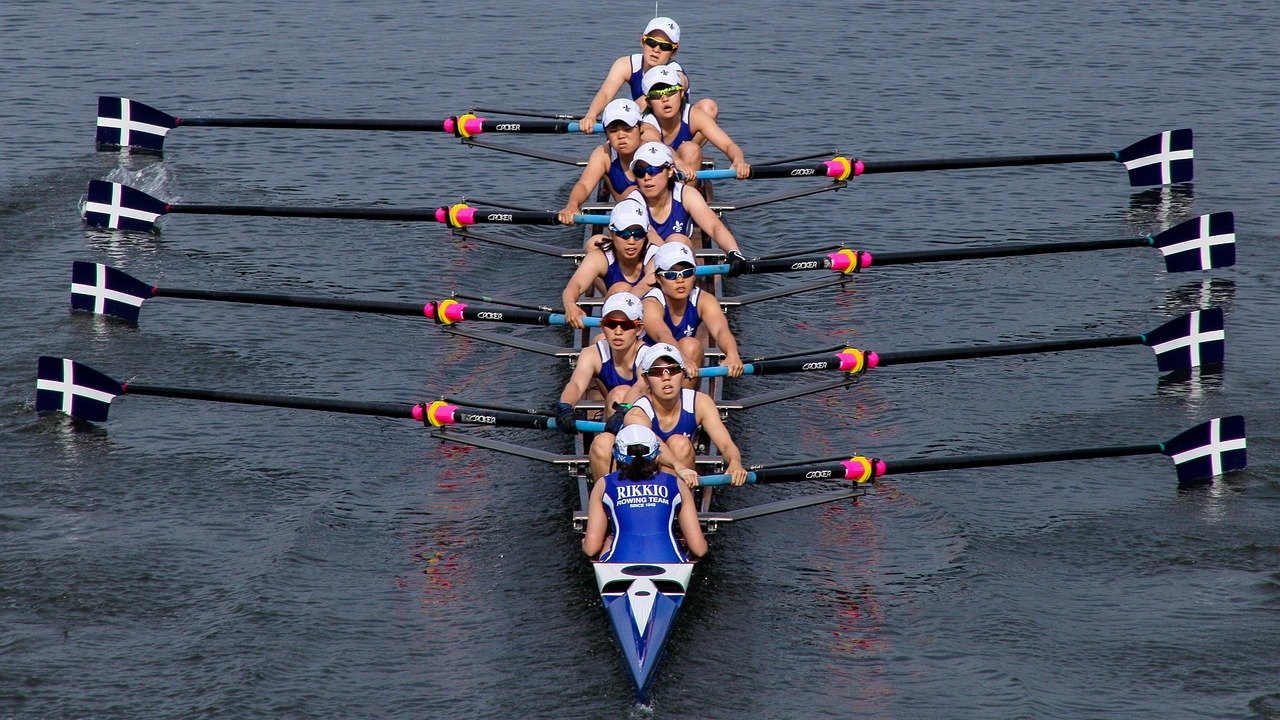Athletics, often referred to as track and field, is a diverse collection of sporting events that test the limits of human speed, strength, and endurance. From the explosive power of sprinters to the strategic pacing of marathon runners, athletics encompasses a wide spectrum of disciplines, making it one of the most universally recognized and participated-in sports in the world. Whether you’re a seasoned athlete or just curious about the sport, this comprehensive guide will explore the fascinating world of athletics and provide insights into its various components.
Understanding the Core Disciplines of Athletics
Athletics is typically divided into three main categories: track events, field events, and combined events. Each category requires a unique set of skills and training regimes, contributing to the overall richness and variety of the sport.
Track Events: A Test of Speed and Endurance
Track events are races conducted on a running track. These races range from short sprints requiring explosive power to long-distance runs demanding incredible stamina.
- Sprints: These include the 100m, 200m, and 400m races. Sprinters focus on maximizing speed and acceleration over short distances. For example, the 100m world record, held by Usain Bolt, stands at an astonishing 9.58 seconds.
- Middle Distance: Races such as the 800m and 1500m blend speed and endurance. Athletes in these events need tactical awareness and the ability to pace themselves effectively.
- Long Distance: Events like the 5000m, 10,000m, and marathon test athletes’ cardiovascular endurance and mental fortitude. Marathon runners, for example, often train by running upwards of 100 miles per week.
- Hurdles: These races involve running over barriers (hurdles) at various distances (100m/110m, 400m). They require a combination of sprinting speed and jumping technique.
- Relays: Teams of athletes compete, passing a baton to each other while completing a set distance. Common relays include the 4x100m and 4x400m, emphasizing teamwork and coordinated speed.
Field Events: Power, Precision, and Technique
Field events involve various forms of jumping and throwing, showcasing raw power, technical precision, and strategic execution.
- Jumping Events:
Long Jump: Athletes run towards a takeoff board and jump as far as possible into a sandpit. Factors include speed, takeoff angle, and body control.
Triple Jump: Similar to the long jump but involves a hop, step, and jump sequence. This event demands exceptional lower body strength and coordination.
High Jump: Athletes jump over a horizontal bar without knocking it off. Technique and flexibility are crucial for success.
Pole Vault: Using a pole, athletes vault over a high bar. This event requires immense upper body strength, coordination, and courage.
- Throwing Events:
Shot Put: Athletes throw a heavy metal ball (the “shot”) as far as possible. Power and technique are paramount.
Discus Throw: Athletes throw a weighted disc using a rotating motion. Aerodynamics and release angle play a key role.
Hammer Throw: Athletes swing a heavy ball attached to a wire and then release it for maximum distance. This event demands strength, coordination, and timing.
Javelin Throw: Athletes throw a spear-like object (the javelin) as far as possible. Technique and arm strength are crucial.
Combined Events: The Ultimate Test of Versatility
Combined events challenge athletes to compete in multiple disciplines, demanding both physical and mental resilience.
- Decathlon (Men): A two-day event consisting of 100m, long jump, shot put, high jump, 400m (Day 1), 110m hurdles, discus throw, pole vault, javelin throw, and 1500m (Day 2). Decathletes require proficiency across all athletic disciplines.
- Heptathlon (Women): A two-day event consisting of 100m hurdles, high jump, shot put, 200m (Day 1), long jump, javelin throw, and 800m (Day 2). Similar to the decathlon, heptathletes must be well-rounded and adaptable.
Training for Athletic Success: A Comprehensive Approach
Athletics training is a multifaceted process that requires a structured approach, incorporating various training methods to optimize performance and prevent injuries.
Strength and Conditioning: Building the Foundation
Strength training is crucial for all athletic disciplines. It improves power, speed, and endurance, while also reducing the risk of injuries.
- Weightlifting: Exercises like squats, deadlifts, and bench presses build overall strength and power.
- Plyometrics: Jumping exercises enhance explosive power, essential for sprinters and jumpers. Examples include box jumps and jump squats.
- Core Training: Strengthening the core muscles improves stability and balance, crucial for efficient movement and injury prevention. Exercises include planks, Russian twists, and medicine ball throws.
Technique Training: Honing Precision and Efficiency
Mastering proper technique is essential for maximizing performance and minimizing the risk of injuries.
- Drills: Athletes perform specific drills to refine their technique in each discipline. For example, hurdlers practice hurdle clearance drills, while throwers focus on proper throwing mechanics.
- Video Analysis: Analyzing videos of athletes performing their events helps identify areas for improvement and refine technique.
- Coaching: Experienced coaches provide guidance and feedback to help athletes develop and refine their technique.
Nutrition and Recovery: Fueling Performance and Repairing the Body
Proper nutrition and recovery are vital for optimizing performance and preventing injuries.
- Balanced Diet: A balanced diet rich in carbohydrates, protein, and healthy fats provides the energy and nutrients needed for training and recovery.
- Hydration: Staying hydrated is crucial for maintaining performance and preventing dehydration. Athletes should drink plenty of water throughout the day, especially before, during, and after training.
- Rest and Recovery: Adequate rest and recovery are essential for muscle repair and growth. Athletes should aim for 7-9 hours of sleep per night and incorporate rest days into their training schedule.
- Active Recovery: Low-intensity activities like swimming or walking can help reduce muscle soreness and improve recovery.
The Mental Game in Athletics: Beyond Physical Prowess
While physical prowess is essential, the mental aspect of athletics plays a crucial role in determining success.
Goal Setting: Charting the Course to Achievement
Setting specific, measurable, achievable, relevant, and time-bound (SMART) goals provides direction and motivation.
- Short-term goals: Focus on improving specific aspects of performance, such as reducing sprint times by a fraction of a second or increasing throwing distance by a few centimeters.
- Long-term goals: Focus on achieving major milestones, such as qualifying for a national championship or setting a personal best record.
Visualization: Seeing Success Before It Happens
Visualization involves mentally rehearsing events to improve confidence and performance. Athletes can visualize themselves executing their events flawlessly, which can enhance focus and reduce anxiety.
Managing Pressure and Anxiety: Performing Under Stress
Athletes often face immense pressure to perform, which can lead to anxiety. Developing coping strategies can help manage stress and maintain focus.
- Deep breathing exercises: Slow, deep breaths can help calm the nervous system and reduce anxiety.
- Positive self-talk: Replacing negative thoughts with positive affirmations can boost confidence and improve performance.
- Mindfulness: Focusing on the present moment can help reduce distractions and improve concentration.
The Global Impact of Athletics: A Sport for All
Athletics is a truly global sport, with athletes from all corners of the world competing at the highest levels.
Major Competitions: Showcasing Elite Talent
Major athletics competitions, such as the Olympic Games and the World Athletics Championships, provide a platform for athletes to showcase their talents and compete for global recognition. These events attract millions of viewers and inspire aspiring athletes worldwide.
Inclusivity and Accessibility: A Sport for Everyone
Athletics is a relatively accessible sport, with minimal equipment requirements and opportunities for participation at all levels. Many communities offer youth athletics programs, providing children and adolescents with the chance to develop their skills and enjoy the benefits of physical activity. Furthermore, adaptations are made to accommodate athletes with disabilities, ensuring that everyone has the opportunity to participate.
Promoting Health and Fitness: Inspiring Active Lifestyles
Athletics promotes health and fitness by encouraging people of all ages to engage in physical activity. Whether it’s running, jumping, or throwing, athletics provides a wide range of activities that can improve cardiovascular health, strength, and overall well-being. Furthermore, it fosters a sense of discipline, perseverance, and teamwork.
Conclusion
Athletics is a compelling and multifaceted sport that celebrates the limits of human potential. From the explosive speed of sprinters to the enduring stamina of marathon runners, athletics showcases the remarkable capabilities of the human body. By understanding the core disciplines, embracing a comprehensive training approach, and mastering the mental game, aspiring athletes can unlock their full potential and achieve success in this captivating sport. Whether you’re a seasoned competitor or just starting out, athletics offers a pathway to physical fitness, personal growth, and a lifelong love of sports.



